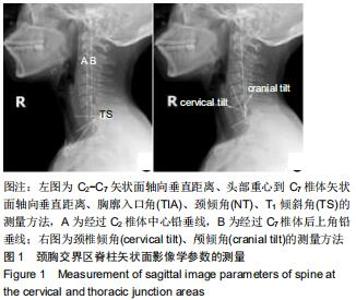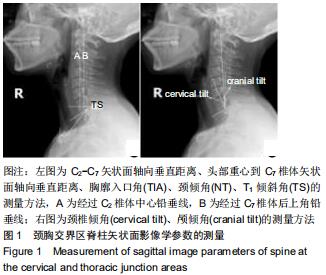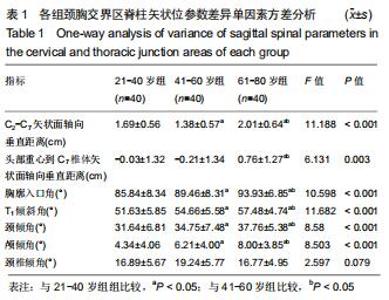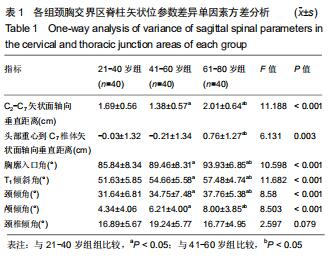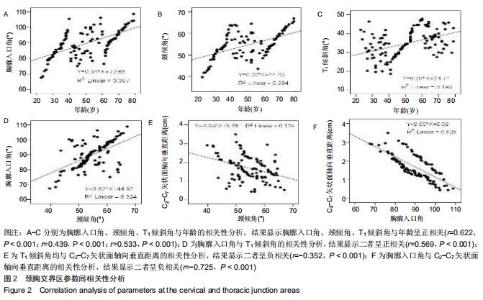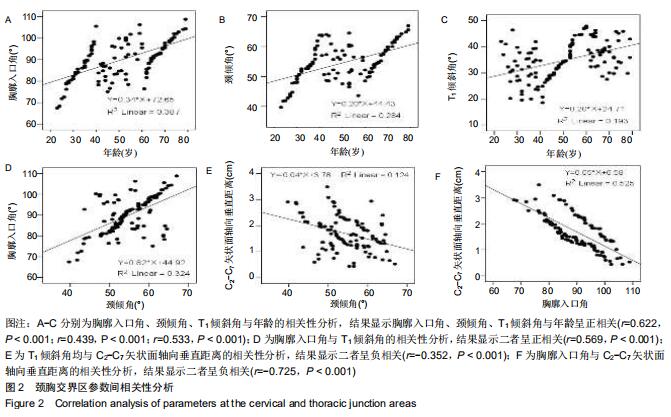|
[1] 赵文奎,于淼,韦峰,等.无症状成人颈椎矢状位曲度分析及其与全脊柱矢状位参数的关系[J].中国脊柱脊髓杂志, 2015,25(3):231-238.
[2] 黄清奇,刘少强,梁珪清.颈椎矢状面力线与平衡的临床意义研究进展[J].中华外科杂志,2018,56(8):634-638.
[3] 邓元,倪斌.颈椎矢状序列测量方法的研究进展[J].中国脊柱脊髓杂志,2014,24(7):655-659.
[4] LEE SH, KIM KT, SEO EM, et al. The influence of thoracic inlet alignment on the craniocervical sagittal balance in asymptomatic adults.J Spinal Disord Tech.2012;25(2):E41-47.
[5] CHENG J, LIU P, SUN D, et al.Correlation of cervical and thoracic inlet sagittal parameters by MRI and radiography in patients with cervical spondylosis.Medicine(Baltimore).2019;98(7):e14393.
[6] 傅美淳,罗光平.颈椎X线矢状面测量的研究进展[J].中国继续医学教育,2017,9(32):39-41.
[7] GOH S, TAN C, PRICE RI, et al.Influence of age and gender on thoracic vertebral body shape and disc degeneration:an MR investigation of 169 cases.J Anat.2000;197 Pt4:647-657.
[8] AILON T, SHAFFREY CL, LENKE LG, et al. Progressive spinal kyphosis in the aging population.Neurosurgery.2015;77 Suppl 4:S164-172.
[9] YOKOYAMA K, KAWANISHI M, YAMADA M, et al. Age-related variations in global spinal and sagittal balance in asymptomatic Japanese adults.Neurol Res.2017;39(5):414-418.
[10] BASTIR M, GARCÍA MARTÍNEZ D, RECHEIS W, et al. Differential growth and development of the upper and lower human thorax.PLoS One.2013;8(9):e75128.
[11] GARCÍA-MARTÍNEZ D, RECHEIS W, BASTIR M. Ontogeny of 3D rib curvature and its importance for the understanding of human thorax development.Am J Phys Anthropol.2016;159(3):423-431.
[12] LEE SH, SON ES, SEO EM, et al. Fctors determining cervical spine sagittal balance in asymptomatic adults:correlation with spinopelvic balance and thoracic inlet alignment.Spine J.2015; 15(4):705-712.
[13] JUN HS, KIM JH, AHN JH, et al. T1 slope and degenerative cervical spondylolisthesis.Spine(Phila Pa 1976).2015;40(4):E220-226.
[14] PARK JH, CHO CB, SONG JH, et al. T1 slope and cervical sagittal alignment on cervical CT radiographs of Asymptomatic persons.J Korean Neurosurg Soc.2013;53(6):356-359.
[15] 张黎龙,程招军,崔子健,等.MRI测量脊髓型颈椎病患者矢状位参数相关性分析[J].中国修复重建外科杂志,2017,31(4):451-454.
[16] JUN HS, CHANG IB, SONG JB, et al.Is it possible to evaluate the parameters of cervical sagittal alignment on cervical computed tomographic scans.Spine(Phila Pa 1976).2014;39(10):E630-636.
[17] 刘国臻,刘磊,王运涛,等.脊髓型颈椎病术前矢状面影像学参数特点及相互关系[J].中国矫形外科杂志,2018,26(21):1992-1996.
|
